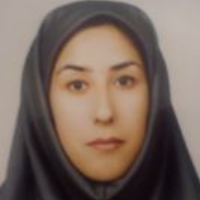Study and Analysis of the Execution Method of Marquetry Inlay from the Qajar Period to the Recent Decade
Author(s):
Article Type:
Research/Original Article (دارای رتبه معتبر)
Abstract:
According to historical sources, (Khātam) inlay is one of the wooden arts of Iran, beginning of which may be considered in the Al-Muzaffar period based on the inlay that remains preserved in the Metropolitan Museum. Remaining pieces from the Safavid era, namely entrance doors, particularly in palaces, as well as chairs, suggest that this period has been notably one the glorious eras of this art in Iran. The centre of producing these works in the Safavid era was Isfahan city, though later it was replaced by Shiraz which became the only remaining centre of this craft. This art has achieved valuable achievements in each period, some of which have continued to this day. Among the works of inlay left from the past, there are unique masterpieces, an important part of which is related to the Qajar period. The aim of this study was to explain the marquetry inlay method and to analyze its continuity in order to answer the following questions: 1. What are the technical characteristics of the marquetry inlay method? 2- What factors are effective in the continuation of the marquetry inlay from the Qajar period to the recent decade? One of the technical features of the marquetry inlay method is the creation of color diversity in inlaying, which has been achieved with the help of inlay blades. In this research, the descriptive-analytical research method and its methodological approach are based on a constructivist approach. One of the most important factors in the continuation of this method is the parehiy inlay, the use of which has also been under the influence of factors such as the variety of raw materials, as well as ease and speed in construction. For this purpose, the effects of the marquetry inlay index from the Qajar period to the recent decade have been studied despite the limited number of works of statistical samples which include 3 works preserved in the World Heritage Collection of Golestan Palace, Ostad Saba Museum and Reza Abbasi Museum, 2 works preserved in the Research Institute of Traditional Arts and 1 work preserved in the private collection of Victoria and Albert, which has been purposefully selected. In this research, the research method is descriptive-analytical. The collection of materials was based on library studies and field observations. The results of the analysis show that the marquetry inlay method, which is one of the important achievements of Qajar inlay, has been influenced by the emergence of parehiy inlay. Also, the variety of colors resulting from the variety of raw materials in the inlay and the emergence of a barrier as a protector and maintainer of the inlay have provided the continuation of this method until the last decade. One of the most important findings of this study, in addition to defining the characteristics of the last achievements of the Qajar period, has been the analysis of how marquetry inlay has continued so far. The results of studies showed that not only the Qajar period was one of the most important and influential historical periods in inlay, but also the achievements that were added to inlay in this period have continued until now and this point has caused the dynamism of this art. The data of this research have been collected by library and field methods (observation and interview). Due to the limitations of writing, instead of scientific citation, the method of producing science has been used in many cases. In this regard, while collecting library information, more field methods are used and by referring to the works and directly observing their analyses, analysis and exact characteristics are extracted without any prejudice. Thematic features in this research require the use of historical methods for analysis. The studied samples are 6 inlaid works, which are also decorated in the style of mosaic inlays and are preserved in domestic and foreign museums. The sampling method is selective and purposeful. The analysis of information and data, used in this research, has been done qualitatively. The most important achievements of Qajar period inlaying are Parhati inlay, Toglo Morvarid inlay and marquetry inlay method. One of the most important factors in the continuation of these achievements, which has caused the dynamism of this art, can be the variety of raw materials, while other significant factors include variety and the emergence of innovations in the use of containers that have appeared in the mosaic inlay. In addition, the inlay, which is one of the most important achievements of the Qajar period, has led to the continuation of the mosaic inlay method until now.
Keywords:
Language:
Persian
Published:
Negareh journal, Volume:18 Issue: 67, 2023
Pages:
171 to 189
magiran.com/p2631716
دانلود و مطالعه متن این مقاله با یکی از روشهای زیر امکان پذیر است:
اشتراک شخصی
با عضویت و پرداخت آنلاین حق اشتراک یکساله به مبلغ 1,390,000ريال میتوانید 70 عنوان مطلب دانلود کنید!
اشتراک سازمانی
به کتابخانه دانشگاه یا محل کار خود پیشنهاد کنید تا اشتراک سازمانی این پایگاه را برای دسترسی نامحدود همه کاربران به متن مطالب تهیه نمایند!
توجه!
- حق عضویت دریافتی صرف حمایت از نشریات عضو و نگهداری، تکمیل و توسعه مگیران میشود.
- پرداخت حق اشتراک و دانلود مقالات اجازه بازنشر آن در سایر رسانههای چاپی و دیجیتال را به کاربر نمیدهد.
In order to view content subscription is required
Personal subscription
Subscribe magiran.com for 70 € euros via PayPal and download 70 articles during a year.
Organization subscription
Please contact us to subscribe your university or library for unlimited access!



